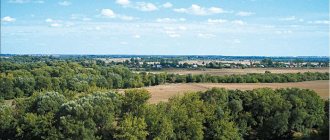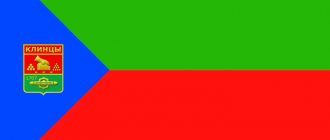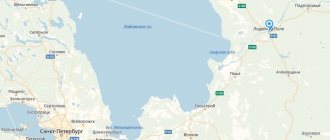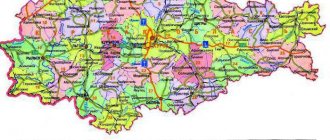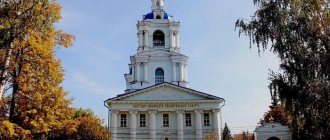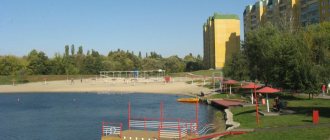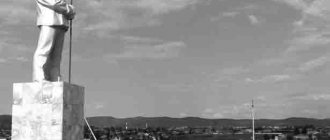Kursk region is one of the constituent entities of the Russian Federation, part of the Central Federal District. It borders with the Oryol, Bryansk, Lipetsk, Voronezh, Belgorod regions of the Russian Federation and the Sumy region of Ukraine. The situation with the population in the Kursk region is in many ways similar to the general situation in the country.
Geography of the Kursk region
Geographically, the region is located in the southwest of the Central Russian Upland, between 50°54´ and 52°26´ northern latitude. It covers an area of 29.8 thousand square kilometers. From north to south it extends for 171 km, and from west to east – for 305 km.
The region has a temperate continental climate, with warm summers and relatively mild winters. Cloudy weather prevails throughout the year, occupying 60% of all days, and clear weather accounts for only 20%. Annual precipitation is 500–600 mm per year.
Population of the Belgorod and Kursk regions by district for 2020
Now the Kursk region continues to occupy an important strategic position. Transport routes connecting Moscow with Crimea pass through Kursk. During the Great Patriotic War, the famous Battle of Kursk took place here - a battle after which the initiative in the war forever passed to the Soviet troops.
With the growing level of modern needs of society, the existing financing of the healthcare industry necessitates the need to attract various sources of financing, including private ones.
The Information and Press Committee of the Kursk Region (N.V. Lymar) must ensure the official publication of information on the cost of living for the 1st quarter of 2022, established by this resolution. The Kursk region is located in the forest-steppe zone. The soils are podzolized, leached chernozems, and in the north-west - gray forest soils.
Administrative division and economy of the Kursk region
There are 28 districts and 480 village councils in the region. Within the Kursk region there are 2,775 rural settlements and 32 urban settlements. There are five urban districts and 28 municipalities.
The economy of the Kursk region is dominated by agriculture and ore mining. Kursk NPP is operational. 72% of the region's lands are cultivated. Growing of grain, fodder and industrial crops predominates. They raise cattle, poultry and pigs.
Both road and rail transport are developed in the Kursk region. The latter is largely tied to the territory of Ukraine.
Migration
During 2022, about 32 thousand people arrived in the city, and about 29 thousand left; the migration increase is 3 thousand. 25 thousand of them move within Russia, half change their locality in the Kursk region, and the other half prefer to come to Kursk from another region or move to another region. About 6,000 people came from foreign countries (part of the CIS), but only 1,200 left Kursk. 1,090 and 2,180 people interacted with other countries in this regard (arrived and left, respectively).
The reasons for the positive migration flow are the good economic situation both in the region and in the city itself. More than 30 thousand enterprises and individual entrepreneurs operate in Kursk. Most of them work in the energy sector (a third of all industries), mechanical engineering (a quarter of all industry) and petrochemical (14%) industries.
Kursk has a low unemployment rate - a specialist with sufficient qualifications and level of education will have no problems finding a job. The employment assistance service actively helps with this - job fairs and advanced training courses are regularly held.
Nevertheless, a number of Kursk residents leave the city and region for predominantly more developed and larger cities. The main reasons for this are obtaining a quality education and changing jobs to obtain a higher-paying and promising job. Some citizens return back after receiving higher education, since enterprises in Kursk can provide their employees with well-paid jobs with prospects for further development.
Population of the Kursk region - general information
The Kursk region is one of the most populated in Russia. In 2017-2018, the population of the Kursk region was 1 million 116,000 people. The average population density was 37 people/m2. The share of the urban population is 68%.
The ethnic composition of the residents of the Kursk region is quite homogeneous. Over 90 percent of the population are Russians. There are much fewer Ukrainians in the region – only 1–2%. Armenians are in third place. Representatives of other nationalities are present in very small numbers.
The population dynamics of the Kursk region is quite negative. There was a steady increase in population until 1930, but then there was a rapid decline in the number of inhabitants, which continued until approximately 1960. At its maximum, the number was up to 3,000,000 people. By 1960 there were already only 1,500,000 people, that is, 2 times less than in 1930. After 1960, the population declined at a slow pace and not constantly. Thus, in recent years there has been no pronounced demographic dynamics in the region.
In 2003, the number of deceased residents was more than 2.2 times greater than the number of births. In 2010, this gap decreased significantly and amounted to a value close to 1.6.
Men and women
The gender ratio of residents is 45.5% to 54.5%. These are natural indicators for most cities in the Russian Federation, as well as developed countries in general. For every 1,000 men in Kursk, there are about 1,198 women. This ratio is a consequence of big problems not only in this region, but also in Russia as a whole. The reason lies in several wars in which the USSR and then the Russian Federation participated during the 20th and 21st centuries. The collapse of the Soviet Union also made a big contribution.
The 90s were marked by big problems in the economic and social spheres. As a result, not only did overall mortality increase (at the same time, significantly more men died due to well-known reasons), but birth rates also worsened, as well as the number of new marriages and families. At the moment, the situation is gradually beginning to improve due to the competent policies pursued by the government of the Russian Federation.
History of the region's population
Favorable climatic conditions and proximity to trade routes contributed to the settlement of the Kursk region. Initially, northerners lived here. Important trade routes passed through their lands.
Until the end of the 16th century, most residents led a nomadic lifestyle and moved frequently. In the next 2 centuries, the settlement of the region was facilitated by the transition to agriculture. In addition to immigrants from primordially Russian territories, Lithuanians began to actively move into the Kursk region. There were many Ukrainians in the south.
Among the Russian population of the Kursk region there were many representatives of southern Russian groups. Western and Central Russian nationalities were also common, but their share was smaller.
Population of Kursk
Fedotova Spit separates the Sea of Azov from the Utlyuk Estuary. The total length of the spit is about 45 kilometers, since this includes the territory of Biryuchiy Island, which until 1929 was really an island. After the sand was later washed up, Biryuchiy connected with Fedotova Spit.
Your Kursk is the most evil city. I have never seen angrier people anywhere, some kind of horror... what caused such aggression and fear of everything new?
Kursk is a city located in the Russian Federation; the city has the status of the administrative center of the Kursk region. It is located five hundred kilometers south of the capital. It is also worth saying that in the Middle Ages the city was the capital of the Kursk Principality and since the city, we can say that Kursk is the cultural and religious center of the Russian Federation. The population of the city of Kursk is thousands.
Their importance for the development of industry, trade and agriculture is difficult to overestimate. In the Kursk region, a solemn meeting marked the 10th anniversary of the formation of the Air Force of the Russian Federation.
As of January 1, 2022, it amounted to 1,103,059 people. This is four thousand fewer than a year ago.
Population data for the city of Kursk (Russia) is collected from official population censuses and open sources of information.
For clarity, on the population graph, the axis of the number of residents does not start from “0”. The graph is interactive - by clicking the “City” and “Rural” buttons, you will get only the selected values.
According to data from all-Union and all-Russian censuses [55]:. Material from Wikipedia - the free encyclopedia. The current version of the page has not yet been verified by experienced participants and may differ significantly from the version verified on June 28; checks require 9 edits. Belgorod region. Voronezh region. Lipetsk region.
Age structure of the population
The average age of a resident of the Kursk region is 41.3 years. Compared to the previous census, it has increased by 1.3 years. This is due to the increase in life expectancy of the population. This value is close to the average for the population of the Central Federal District, where it is 40.9 years, and for Russia as a whole - 39 years. The decline in the birth rate is also the reason for the increase in the average age of residents.
The number of young residents of the region is steadily declining. In 2002, their share was 17.14%, and in 2010 – 14.78%. The picture is similar in the country as a whole - a decrease from 18.14 to 16.19 percentage share, and in the Central Federal District - from 15.33 to 13.85.
At the same time, the share of elderly people, on the contrary, increased – from 24.82 to 25.54 percent.
General information and description of Kursk
At the beginning of 2000, about 1.281 million people lived in the Kursk region. This number has been constantly decreasing due to natural population decline and the outflow of residents to other regions of the country. In Kursk itself, according to data for 2000, there were 443,500 inhabitants. The birth rate is gradually increasing. Despite the fairly high level of migration, natural population growth can correct the generally negative population dynamics. For this purpose, various programs are carried out both at the regional and federal levels.
Table I. Populated areas. Date of access: February 7 Date of access: October 10 Date of access: October 14 Federal State Statistics Service. Date of access 18 September Table Date of access 31 May Date of access 16 November Date of access 2 August Date of access 6 August All-Union population census of the year.
We resolve legal issues easier and faster. Read our answers and forum to find out and get advice.
For clarity, on the population graph, the axis of the number of residents does not start from “0”. The graph is interactive - by clicking the “Female” and “Male” buttons, you will get only the selected values.
Sex structure of the population
In the Kursk region, the same situation with the ratio of men and women is observed as in the country as a whole. Thus, the share of women was 54.7 percent, and the share of men was 45.3 percent.
The proportion of married men is greater than the proportion of married women. For every thousand males (16 years of age and older) in the region there were 659 married people, and for every thousand women of the same age there were 528 married people. This is largely due to the larger proportion of women in the population. After all, there are 105.5 thousand more of them in the region than men.
Some residents are in so-called unregistered marriages. There are 71 such people per thousand men, and 57 per thousand women. 225 men and 143 women (per thousand people) consider themselves bachelors (celibate).
The number of divorced men is 63 per thousand and another 13 separated. For women, these figures are 91 and 13 people, respectively.
The largest proportion of men was noted in the Kursk region - 47.3 percent. And the largest proportion of women (54.8 percent) is in the Glushkovsky and Sudzhansky districts.
Population of Kursk 2022
In the Kursk region, according to data published by Kurskstat at the end of June, as of January 1, 2022, there were 1 million 107 thousand 41 people living. Over the year, the figure decreased by 8,196 people. At the same time, the natural decline amounted to 6,900 people, the migration outflow - 1,296 people.
Absolutely agree. People are stupid, greedy, uneducated, apparently coming from the villages. I've been to the city several times, mostly for work. Promises are not kept, it is impossible to reach an agreement, and it is very difficult to work. I have never seen such redneck people anywhere else.
The youth of the world's population is ensured mainly by residents of Asia and Africa, which are characterized by large families. In accordance with the forecast for the socio-economic development of the Russian Federation, in the coming years, our country will not be able to reverse the trend towards aging: in 2021 and 2021, the birth rate will fall, and the number of the retirement age population will grow.
The food production index for January-June 2022 was 100.1%. During the analyzed period, production in physical terms of beef, pork, preserved fish, vegetable and fruit juices for baby food, spreads, vegetable oil, soybean oil, cheeses, fermented milk products (except sour cream), condensed milk products, flour, and mineral water increased.
Representatives of 142 nationalities live on the territory of the Kursk region
The Kursk district of the Kursk region is the largest, with a population of 57,692 people. In the area on the right bank of the Rat River there is an ancient Slavic settlement dating back to the 9th-14th centuries.
In 1928, the Kursk province was abolished, and its territory became part of the Central Black Earth Region.
China: population count. Germany: population. Production calendar New ruble banknote. Download programs for PC and Android. Maps and graphs: Russia and the world Photos of some cities of the Russian Federation and the world About the site. Population as of January 1 of the year.
I invite you to a lesson on preparing for the Unified State Exam in Geography. Today we will look at task No. 33 on the topic “Numbers, natural movement of the population of Russia.” It is the penultimate one in the Unified State Exam. The difficulty level of the task is high. Up to 2 points are awarded for correct execution.

